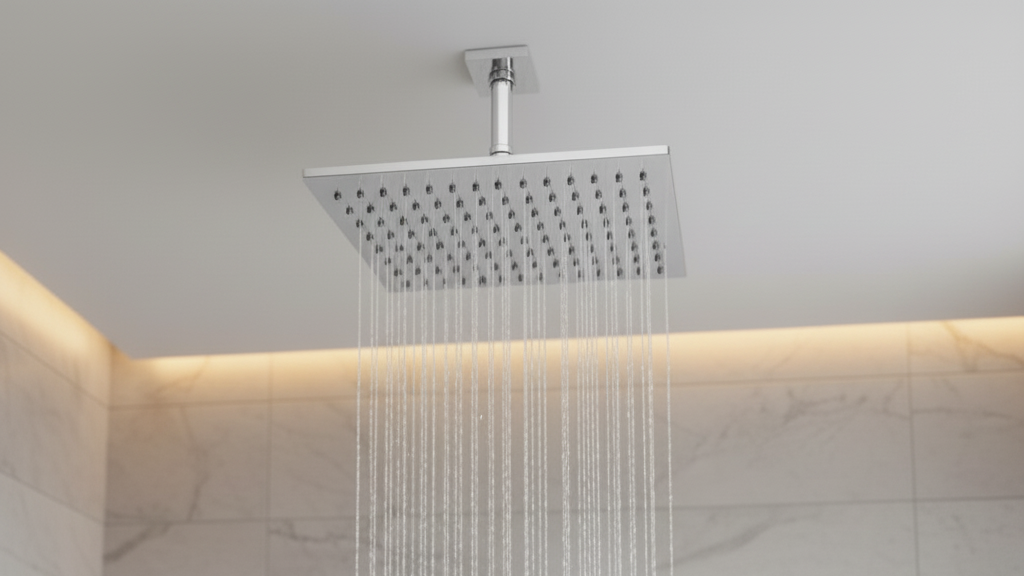Is a Rain Shower Showerhead Eco-Friendly?
Rain shower showerheads, known for their wide, gentle spray mimicking natural rainfall, are a luxurious addition to modern bathrooms. But are they eco-friendly? With growing focus on sustainability in 2025, understanding their water usage, materials, and maintenance is key to determining their environmental impact. While some rain showerheads are designed with eco-friendly features, their eco-friendliness depends on specific attributes and how you use them. This guide explores whether rain shower showerheads align with a sustainable bathroom, offering tips to maximize their green potential.
What Makes a Showerhead Eco-Friendly?
Eco-friendly showerheads minimize environmental impact through:
Water Efficiency: Using less water (ideally 1.5–2.0 GPM) to reduce consumption and energy for heating.
Sustainable Materials: Made from recyclable or durable materials to limit waste.
Low Maintenance: Resistant to mineral buildup, reducing the need for chemical cleaners.
Longevity: Durable designs that don’t require frequent replacement.
Are Rain Shower Showerheads Eco-Friendly?
Rain showerheads can be eco-friendly, but it depends on their design and usage:
Water Usage: Traditional rain showerheads, with large 8–12-inch heads, may use 2.5–4.0 GPM, consuming more water than standard showerheads (2.5 GPM average). However, many 2025 models are WaterSense-certified, using 1.5–2.0 GPM with aerated sprays to maintain pressure while saving water.
Materials: Eco-friendly rain showerheads use durable, recyclable materials like stainless steel or brass, which resist corrosion and bacteria. Some include recycled plastic or sustainable coatings, reducing environmental impact.
Low-Flow Technology: Modern rain showerheads often feature aerators or flow restrictors, cutting water use by up to 20% compared to older models. This supports sustainability goals.
Maintenance: Silicone nozzles prevent mineral buildup, reducing the need for harsh cleaners, Durable designs last longer, minimizing replacements.
Benefits of Eco-Friendly Rain Shower Showerheads
Water and Energy Savings: WaterSense-certified models use 1.5–2.0 GPM, saving 2,900 gallons of water per year for a family of four, per EPA estimates, and reducing energy for water heating.
Sustainable Materials: Models with stainless steel or recycled components align with eco-conscious bathrooms, reducing landfill waste.
Luxurious Yet Green: The wide, gentle spray offers a spa-like experience without excessive water use’
Low Maintenance: Anti-clog nozzles resist hard water buildup, as in “Hard Water Stains,” requiring only vinegar for cleaning.
Considerations for Eco-Friendliness
High Water Usage Models: Non-low-flow rain showerheads (3.0+ GPM) can increase water and energy bills, lessening eco-friendliness. Always check the GPM rating.
Installation Impact: Ceiling-mounted rain showerheads may require plumbing modifications, increasing material use and costs.
Water Pressure Needs: In low-pressure homes, non-aerated models may feel weak, tempting longer showers that offset water savings.
Manufacturing: Some budget models use non-recyclable plastics, which aren’t sustainable. Opt for brands with transparent eco-certifications.
How to Make Your Rain Shower Showerhead More Eco-Friendly
Choose WaterSense-Certified Models: Look for 1.5–2.0 GPM showerheads to maximize water savings.
Pair with a Shower Filter: Reduce mineral buildup to extend lifespan.
Shorten Shower Time: Limit showers to 5–7 minutes to conserve water, even with low-flow models.
Clean Regularly: Soak in vinegar monthly to maintain efficiency.
Ventilate: Use a smart exhaust fan to reduce humidity and protect the showerhead.
Combine with Eco-Accessories: Pair with a bamboo soap dish or organic cotton towel for a fully sustainable bathroom.
Are They Right for Your Eco-Conscious Bathroom?
Rain shower showerheads can be eco-friendly if you choose low-flow, WaterSense-certified models with sustainable materials. They offer a luxurious shower while saving water and energy, ideal for eco-conscious homes aiming for a spa-like experience. However, avoid high-flow models or those made with non-recyclable plastics. By selecting a low-flow rain showerhead and maintaining it with non-toxic cleaners, you’ll create a sustainable, hygienic bathroom that aligns with your green lifestyle.
